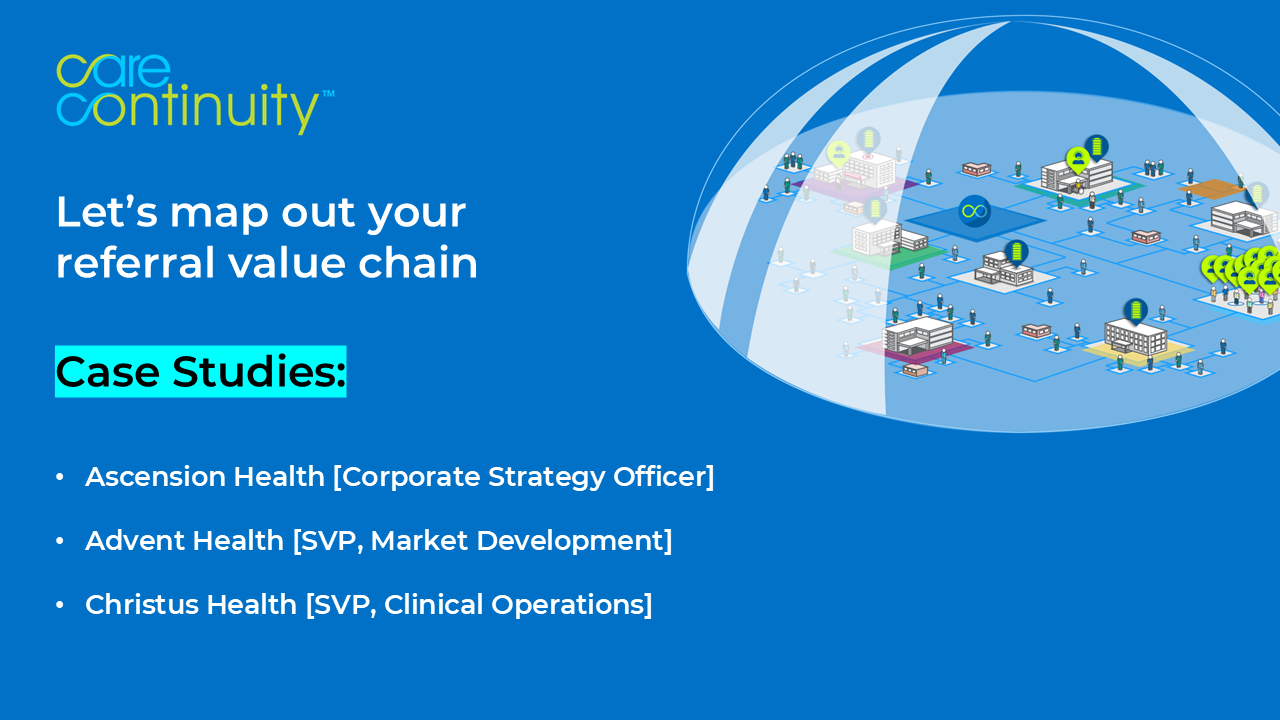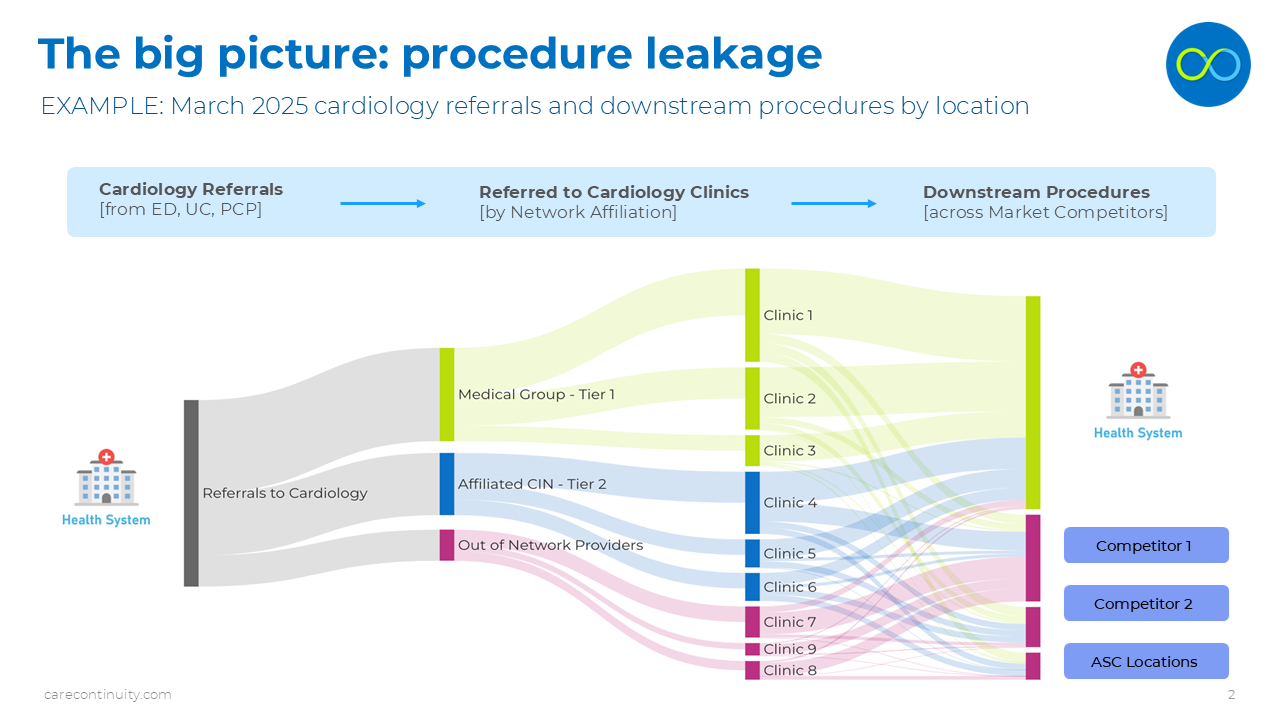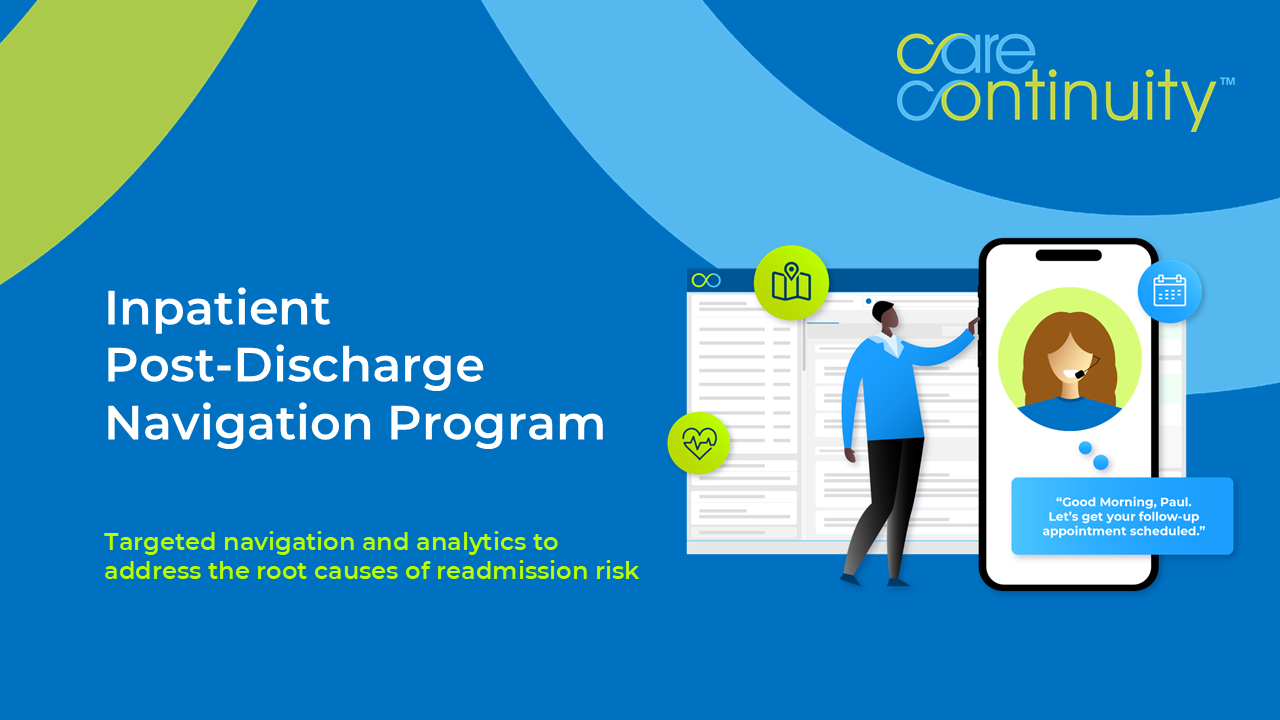Chief Strategy Officer Perspective
3 Key Questions for Health System Strategy and Market Development Teams
This video is for health system strategy leaders, from the Chief Strategy Officer here at Care Continuity. I wanted to share my thoughts on how smarter referral navigation and network intelligence programs can be a strategic asset for your health system in competitive markets. I've spoken with quite a few health system leaders recently, and found that it can be a challenge to define who owns this problem, as patients flow from the front door in primary care and the emergency department, to specialist referrals cheduling, to downstream procedure revenue and leakage. It may seem like this is the core value chain of an integrated delivery system but, as we all know, health systems are fragmented organizations, with different owners of ED, patient access, medical group practices, clinically integrated networks, hospital facilities and surgery center joint ventures. Executing an effective growth strategy takes a cross-functional role like a Strategy Officer to tie it all together and align these different stakeholders.
Understand the Big Picture Value Chain
First let's talk about the big picture of how a health system creates value with an integrated delivery network. Most health systems have invested in medical group alignment to drive high-value referrals to their affiliated specialist network, who in turn bring procedure volumes back to their facilities. And yet more than 50% of the time, this referral value chain is broken. This diagram shows the flow of potential cardiology referrals from your PCP and ED front door, that end up aligned with out-of-network specialists, and the leakage of procedures to competitors or new ASC locations in the market. The truth is, health systems are mostly flying blind when it comes to understanding what happens when valuable specialist referrals leave the network. At many organizations we work with at Care Continuity, the Strategy Officer and Market Development teams sit right in the middle of this value chain, aligning the organizational structure and medical group affiliations to drive growth in key service lines. Connecting the front-door of patient access to the downstream procedure revenue in a competitive market is a fundamental strategic focus area.
The Questions I Always Ask to Frame The Opportunity
I like to start with 3 key questions that help illustrate this point and provide a framework to evaluate your current referral value chain. Let's consider your integrated hospital and medical group alignment as it relates to high value referrals for each service line.
- First, let's examine the Emergency Department and Urgent Care front door, where new patients typically enter your health system. How do you identify valuable specialist referral opportunities in this patient population? Many of these patients require near-term procedures (at a rate that's double an average PCP-to-specialist referral), but we find that most health systems provide limited navigation for follow-up specialist care. ED patients are typically on their own to self schedule and rarely get into centralized scheduling queues.
- Second, we know that most specialist offices are at capacity and have limited appointment slots to handle additional referrals. This impacts patient wait times and is a leading cause of patient leakage to competitors. But is this really a capacity problem, or a prioritization problem? The real question is -how do you prioritize the high-impact referrals so that your specialist providers use their limited capacity most efficiently? We see that many organizations, when you dig into the patient access and scheduling workflow, still use a basic "first in, first out approach" to referrals. The results are less than optimal and creates frustration for specialist providers.
- Finally, how do you track network leakage? Do you know when a patient sees an external specialist and ends up having their procedure at a competitor hospital or ASC across town. How do you assess your extended provider network to know where they take their procedures? We find that many health systems are using outdated claims data to answer this question - but by then it's too late to take any action. These are the 3strategic questions I usually ask, and I think they are worth considering for your health system.
Let's Connect and Discuss How This Applies to Your Health System
As a next step, I hope we can find a time to chat and map out your referral value chain. Regardless of whether you partner with Care Continuity, these strategic questions are a good exercise for any health system. I'd also like to share some real-world examples from strategy executives that we've worked with at other large health systems across the country. Their experience will certainly resonate and provide context for our discussion. Looking forward to your feedback.
John Hansel
Chief Strategy Officer
jhansel@carecontinuity.com








